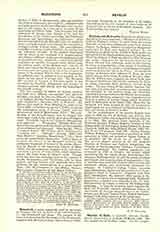

Hexham and Newcastle, Diocese of (HAGULSTADENSIS ET NOVOCASTRENSIS).—Hexham, in Northumberland, England, receives its name from the stream Hextold; its old name, Hagustald, came from another stream, the Halgut, whence the adjective Hagustaldensis used by Bede and medieval writers. It was founded as an abbey by St. Wilfrid of York, in 674, on land given by the Northumbrian queen St. Etheldreda. When the Diocese of York was divided (678) Hexham was made a bishopric for the country between the Rivers Aln and Tees; although, under its first bishop, St. Eata, it remained for a time united to Lindisfarne (founded in 635 by St. Aidan), which diocese extended northwards from the Aln to the Forth. Of the eleven bishops of Hexham who followed St. Eata, six were saints, among them being St. John of Beverley (685-705), St. Wilfrid, who, resigning the See of York, died Bishop of Hexham in 709; and his successor, St. Acca, to whom Venerable Bede dedicated several of his works. The last bishop of this ancient line was Tidfert, who died about 821; no successor was appointed, the condition of the country being too unsettled. A period of disorder followed the Danish devastations, after which Hexham monastery was reconstituted in 1113 as a priory of Austin Canons, which flourished until its dissolution under Henry VIII. Meantime the bishopric had been merged in that of Lindisfarne, which latter see was removed to Chester-le-Street in 883, and thence to Durham in 995.
On the establishment of the present English hierarchy in 1850, the See of Hexham was revived, that. of Newcastle (where the cathedral is) being joined to it in 1861. The previous Vicar Apostolic of the Northern District, William Hogarth, became its first. bishop under the new regime, being followed by James Chadwick (1866-82), John William Bewick (1882-86), and Henry O’Callaghan (1888-89). Bishop Thomas William Wilkinson, consecrated as auxiliary in 1888, succeeded in 1889, and resided at Ushaw College as its president till his death on April 17, 1909. The present diocese answers to the two medieval Dioceses of Durham and Carlisle, comprising the Counties of Northumberland, Durham, Cumberland, and Westmoreland. Its Catholic population was estimated in 1908 at 179,021, the secular clergy numbering 182, the regular clergy (Benedictines, Dominicans, Redemptorists) 45, and the public churches. and chapels (not counting those of communities), 122. It contains three convents of contemplative nuns and numerous schools and institutions conducted by religious. St. Cuthbert’s College, Ushaw, educates some 300 students, clerical and lay; and there is a boys’ grammar school at Newcastle. Together with Our Lady Immaculate, the diocese’s chief patron is St. Cuthbert, to receive whose incorrupt body Durham’s magnificent cathedral was originally built; his ring, now preserved at Ushaw, is worn by the bishop when ordaining. Its long list of native saints includes St. Bede the Venerable, recently proclaimed Doctor of the Church; St. Oswald, king and martyr; St. Godric, hermit; and Blessed Thomas Percy, Earl of Northumberland, with other martyrs of the penal days.
G. E. PHILLIPS

